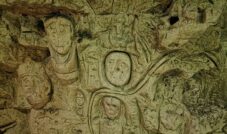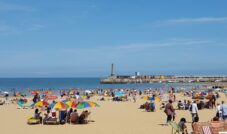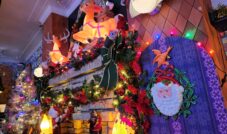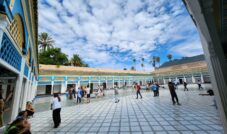Not to be confused with the guy who makes exceedingly good cakes… Rudyard Kipling is the author of the Jungle Books.
While his home was interesting to potter around, it’s the garden I loved the most.
Just look at these colours. It’s one of my most favourite gardens I’ve visited in the south east of England.


>
















What did Kipling write at Batemans?
Rudyard Kipling, the renowned English writer and Nobel laureate, wrote some of his most famous works while living at Bateman’s, his home in East Sussex, England. Kipling lived at Bateman’s from 1902 until his death in 1936. During his time at Bateman’s, he produced a significant body of work, including:
- “Puck of Pook’s Hill” (1906): This collection of short stories is set in the Weald of Sussex and features historical and fantastical tales told by Puck, a character from William Shakespeare’s “A Midsummer Night’s Dream.”
- “Rewards and Fairies” (1910): This sequel to “Puck of Pook’s Hill” continues the theme of historical and fantastical stories told by Puck. The stories in both collections reflect Kipling’s deep love for English history and his interest in preserving a sense of national identity.
- “If—” (1910): Although “If—” is a poem and not a work of prose, it remains one of Kipling’s most famous and widely quoted pieces. It is a timeless poem offering advice on stoicism, perseverance, and character development.
- “The Jungle Book” (1894): While Kipling wrote “The Jungle Book” before moving to Bateman’s, the book’s enduring popularity and influence on literature are worth mentioning. The collection of stories featuring Mowgli, a young boy raised by wolves in the Indian jungle, has been adapted into numerous films and remains a classic in children’s literature.
What is the history of Bateman’s house?
- Medieval Origins: The site of Bateman’s has medieval origins, with the first recorded structure on the property dating back to the 17th century. The core of the present house is believed to have been built in 1634.
- Home to Ironmasters: In the 17th century, the house was owned by the Ironmaster John Brittan. The iron industry was significant in the Weald of Sussex, and the house likely served as a residence for the owner of the local ironworks.
- The Middleton Family: In the 18th century, the Middleton family owned Bateman’s. They were involved in the iron industry and made several additions to the house. The Middletons owned the property until the early 19th century.
- James Bateman: In 1847, the house was bought by James Bateman, a prominent horticulturist and landowner. He was known for his work in the field of orchid cultivation and garden design. Bateman made significant changes to the house and its gardens during his ownership.
- Rudyard Kipling: Rudyard Kipling, the famous author, and his wife Caroline purchased Bateman’s in 1902. They paid £9,300 for the property. Kipling made further modifications to the house, adding a large wing and incorporating elements of his own design.
- National Trust Ownership: After Rudyard Kipling’s death in 1936, Bateman’s was left to his daughter, Elsie Bambridge. In 1952, Elsie, in collaboration with the National Trust, ensured that Bateman’s would be preserved for the public. The house and estate were bequeathed to the National Trust, and it has been open to visitors since then.
Today, Bateman’s is maintained by the National Trust and offers a glimpse into the lives of Rudyard Kipling and his family. The house and its gardens reflect the author’s tastes and interests, making it a unique historical and literary attraction.
Bateman’s Address: Bateman’s Ln, Burwash, Etchingham TN19 7DS
https://www.nationaltrust.org.uk/batemans
>> Read this next: Best Castle & Seaside Day Trips From London <<<












